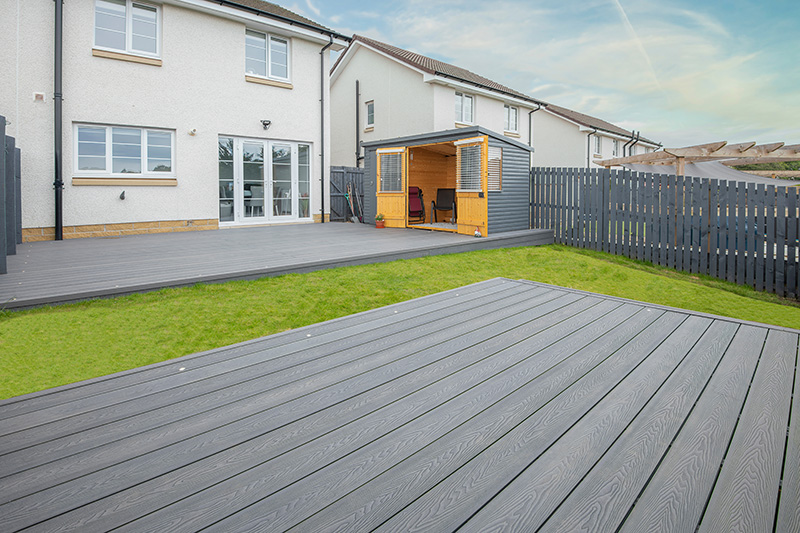
Here’s some handy tips for installing low cost composite decking to renovate your garden, and to keep your DIY project on budget.
We all would like the perfect garden with the lowest outlay possible, so we’ve put together a few thoughts so that you can build your perfect composite decking for as low a cost as possible. Using composite decking in your outdoor space is a great way to make the most out of a limited budget!
The aim of our blog is to help you consider a few different things for your specific project and to help you get the right products, layout of your build and correct materials for your subframe - ensuring that you can construct your very own dream decking. Read on for tips and techniques to ensure your composite decking project remains low cost!
Choosing the right decking for your project
At Dream Decking, we have a range of varying decking boards that are designed and manufactured to be suitable for a range of projects. Our two main ranges, Classic and Premium give you a choice between two excellent products that are both long lasting and are backed up by our fantastic residential warranties. These boards are known as hollow boards - strong composite boards that are lighter, stronger and warp-resistant when compared to their “full-fat” alternative…and also cheaper as they require less material to manufacture!
Consider your decking design
There are many different ways in which you can lay your composite decking, all with varying requirements on waste and financial investment. All of our composite decking boards are 3.6m in length, so you can plan your decking area with that magic number in mind to avoid any cuts and minimise wastage. That being said, if you cannot avoid cutting your boards, there is still the opportunity to use the offcuts to good effect, perhaps even to border your decking!
The most efficient way to lay your decking down is a straightforward, linear installation - leading to less cutting of your composite decking boards, which then leads to less wastage. Below we’ve a couple of tips to help you avoid wasting boards:
- Plan your decking area to use the full length of the boards. This means measuring the length and width of the area and then dividing by the length of the boards. This will tell you how many boards you need. If you can, try to design your deck so that the boards can be laid in straight lines. This will minimise the amount of cutting that needs to be done.
For example, if you need 20 boards that are 3.6 metres long, and your deck is 10 metres long, you can design your deck so that the boards run the full length of the deck. This will only require you to cut 4 boards.
- Use offcuts to border the edge of the decking. Offcuts are the pieces of wood that are left over after cutting the boards to size. Instead of throwing them away, you can use them to border the edge of the decking. This will add a finished look to your deck and also help to prevent the boards from warping or rotting.
For example, if you have 20 offcuts that are each 0.6 metres long, you can use them to create a border around your deck that is 1.2 metres wide. This will not only use up the offcuts, but it will also make your deck look more finished.
By following these tips, you can avoid wasting composite decking boards and create a beautiful and long-lasting deck.
Use a timber subframe
The two main choices for subframes are either matching composite joists, or using their timber counterparts. Even though our decking boards are ideally built upon a composite joist base (ensuring maximum longevity), you can still use a timber subframe as a way to keep the costs down.
Unlike using composite joists, you will have to treat the timber with preservatives and sealants or cover it with joist tape to prevent rot or damage from the elements and weathering. Once your timber is properly treated, using wood can be enough to construct a long lasting decking subframe.
Use DIY helper guides!
All of our Dream Decking composite boards are DIY friendly and we have created an easy to follow, step-by-step installation guide to help you through the process.
We also have other blog entries and guides available if you wish to find out more answers to commonly asked questions, or thoughts around creating the perfect composite decking build!


